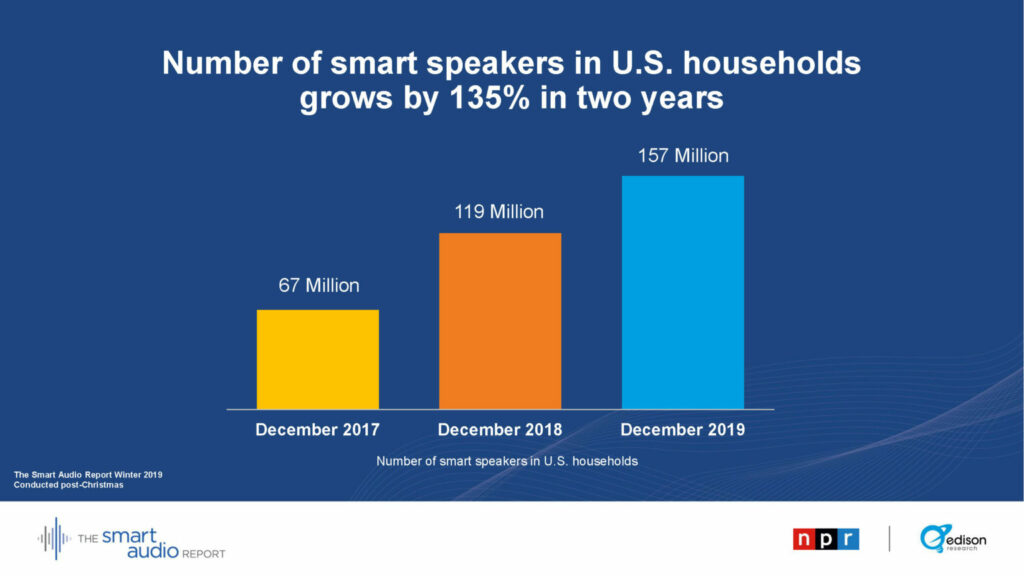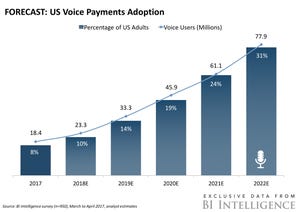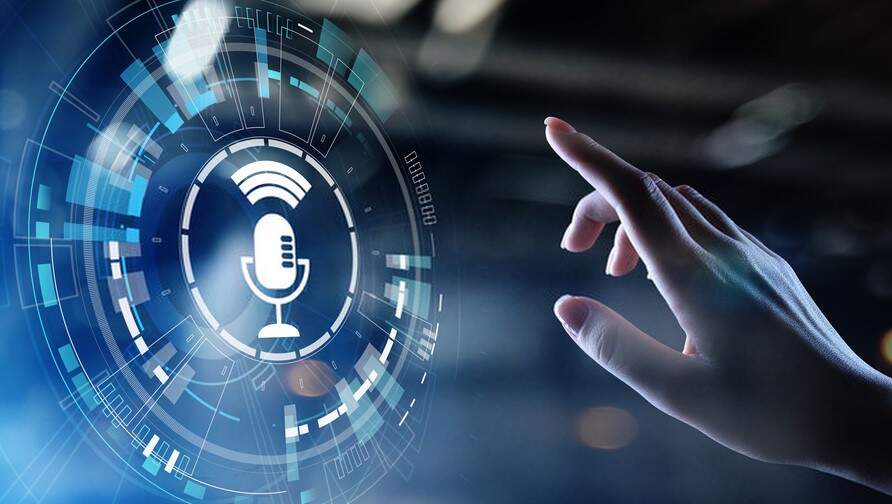Introduction
In this article, we will learn about what voice payments are all about.
We will be talking about
-
- What is voice payment and where you can observe see it in action
-
- The advantages and disadvantages of voice payments
-
- The future of voice payments!
Let’s go!
What are voice payments?
Voice payments is the activity of paying, transferring, receiving money from clients or other individuals using just your voice.
The use of voice can facilitate monetary transfers between individuals and businesses.
These technologies have been on the rise ever since users were able to order something using their home or mobile voice assistants.
Google Home, Amazon Alexa, and similar technologies are all on the verge of making voice payments possible to the extent that people will be able to use unique hotkeys or phrases to trigger transactions and more.
Right now, we are nearing the point where we can create reminders to pay certain payments and schedule any payment using our voice! Many new toys emulate the process of voice payments like Monopoly Voice Banking, and more!
Voice assistants have become commonplace in homes – could any of us live without Google Assistant or Alexa life these days? In the United States, it is estimated that 128 million people have a voice assistant at less than once a month, an increase of 11% from previous years.

Voice payments have the potential to decrease fraud, increase security protocols, verify transactions and more.
Why voice payments?
There are many powerful advantages of voice payments that provide a better user experience for consumers and clients.
Let’s check out what makes voice payments beneficial.
Ease of use and control
The ability to pay by voice is far more convenient than typing long credit card numbers, account numbers, and IBANs. By using voice recognition, a transaction can be carried out much faster and easier.
According to Business Insider, soon nearly a third of US consumers will regularly make payments with their voice.

More mobile banking
The presence of mobile banking already exists, but voice technology facilitates access on the go because it does not require touch. Voice payments can be performed while driving or while the hands are occupied.
As an added benefit, voice technology makes banking more accessible to those who are blind or visually impaired.

Fraud reduction
The uniqueness of a voice is comparable to that of a fingerprint, so fraud can be kept to a minimum. Over 100 characteristics of voice, including timbre and pitch, cannot be mimicked, but passwords and card numbers can easily be copied.

Attractive new technology
Customers will be excited about voice payments. They’re brand new, after all. In turn, this makes the products and services offered by a bank or finance company even more tempting.

Where are voice payments used?
As of now, we understand what voice payment is and its benefits.
But where are voice payments happening around us? Where can we see voice payments taking place?
Let’s go and find out!
Tesla x Alexa
As part of its partnership with Alexa, Tesla seeks voice technology solutions for its vehicles.
As part of the Alexa smart system, they allow U.S. drivers to make fuel purchases using voice assistants at gas stations.
Drivers do not need to swipe their cards or log in since Alexa Pay uses an account and is connected to their in-car entertainment systems. Paying with your voice is simple!
You can watch this video and find out how voice payments are used with the help of Alexa in automobiles
Amazon Alexa
By creating Alexa – a cloud-based voice service, Amazon has enabled its users to add to a wishlist, re-order items, and other practices only by giving a voice command.
Among the features, Alexa offered to do voice commerce and to pay for products and services using your voice.
Amazon users can ask their assistant “Alexa, what time is my bill due?”, ”How much is my next invoice?” or even “How different is this from the previous one?”.
Users can also configure notifications to not miss the payment deadline.
They can even trigger payments via Alexa by asking “Pay my electricity bill”.
You can check out how Alexa helps in facilitating voice payments in this video
If you’re interested in learning more about voice commerce, we have an article about it that’s just out. You can read it by clicking here
Google Home
Google Assistant and its Voice Match are also part of the benefits for Android and iOS users. Xcel Energy has developed a Google action to facilitate invoicing.
Users of Google Assistant-enabled devices can request to view monthly due dates and balance information. Need to pay bills? Just say “Hey Google, pay my internet bill now”.
Xcel supplies 3 million homes with electricity. The issue of energy savings is still relevant and Xcel has noticed the positive impact of using voice assistants on payments.
If you’d like to know more about this, you can access this article here
Apple Siri
Siri, Apple’s voice assistant is also able to send payments between users or pay invoices via voice commands.
How does it work?
According to the Oracle documentation, it allows users to make voice payments to registered beneficiaries from their mobiles.
Thus, Apple users can launch Siri by command and then use the other commands to initiate a transfer to the beneficiaries.
This is done without even physically accessing the application. Siri payments can be made by matching the beneficiary’s nickname registered in the system. The payment authentication process uses Touch ID.
Watch this video to check out how Siri’s voice payment system work
Samsung Bixby
Meet Bixby, another voice banking technology. As a personal assistant, Bixby is developed by Samsung electronics.
In addition to enhancing your user experience, it allows you to do your daily tasks more easily and efficiently by working with the apps you use.
Among Bixby’s benefits one can find:
-
- Routines that are time and effort saving
-
- Simpler “Quick Commands” option
-
- Connected life (voice requests management)
-
- More efficient work done
Proof of its quality, Bixby is on the list of most used voice-activated banking assistants that have an option of voice-enabled payments.
If you are reading this from a Samsung phone, you can check this article on how to activate or link your Samsung Pay with Bixby
Microsoft Cortana
Cortana was released in 2014 as an assistant for Windows phone users. It was named after the guide to artificial intelligence in one of Microsoft’s games.
Microsoft does not have its own mobile operating system, but Cortana is still available on the Android iOS platforms.
However, Cortana wasn’t as popular as the other voice assistants on the market. According to the BBC, “Microsoft has made a sensible decision to double down on Cortana as a platform to aid productivity gains, closely tied to its business-centric tools and services.”
Cortana will become more and more deeply integrated into specific Microsoft platforms, rather than being a generic voice assistant designed to be all things to all people.
Challenges of voice payments
Even though voice payments have their advantages, some disadvantages still make them a budding concept expecting to grow.
Most of these issues arise from the tools or the medium that is used, to facilitate communication and the activity of voice payments
In many ways, the challenges presented to payments are the same as with any new technology: unfamiliarity, lack of security, and more.
Voice payments, like any new technology, need justified by the need that they are filling and, as money is involved, they need to become credible to have wider adoption.
Let’s go and check this last point out!
Security concerns
Customers still have difficulty trusting the voice of systems they cannot physically see and feel because people still believe that voice assistant would listen to their conversations. This concern would create mistrust amongst the user
Mistrust with privacy
On one hand, customers are very afraid of this brand-new technology, on the other, they are also afraid that the same technology would become too personally involved in their lives
Taking account of different accents
Voice assistants have issues when understanding various accents, particularly the people who are non-American.
The Census Bureau and the Center for Immigration Studies have found that 67.3 million Americans (20%) speak a language other than English at home, implying that 20% of the population will have a distinct accent when interacting with a voice assistant. They may also decide not to purchase a voice assistant that won’t understand their commands.
This gap turned out to be significantly greater when it came to media playback.
Problems with integration
To ensure a wider adoption, the software-hardware component at the point of sale must be on par with voice recognition technology.
It is one thing to have great software, but this on a voice-activated hardware device on the security ones.
The cost of integrating with Bluetooth and compatible systems becomes a major hurdle at this stage, companies end up having to cover the majority of the costs.
Participation of financial institutions
Many big names in the industry have started voice payments.
However, the licensing issue means that one is on the way to widespread adoption.
As there has not been a global collaboration between banks, deployments are limited, which shows that the pace of voice payments is still slow.
Return on investment
With digital wallets and banking services, many believe that online transactions are as simple as they can possibly be.
The offer of additional voice payments is often considered a brilliant new feature without any additional utility.
Banks often have the feeling that all it takes is one value-added to get their customers to sign up.
The future of voice payments
Voice payment may be a budding concept for now but its potential is scaled to be game-changing and its value is set to skyrocket in the future.
Let’s go and check out what’s in store for voice payments in the future.
A next-level customer experience
It is much easier to ask a voice to send money to someone than it is to type account numbers, IBANS and information between applications.
The same goes for voice payments, balance checks, and withdrawal alerts. All those daily operations can be much faster and more efficient.
More banking features and upgrades used on the go
Powered by artificial intelligence and machine learning technologies, voice payment enables customers behind the wheel or on the go with their hands full to interact effortlessly with their finances using a voice assistant on their device.
Today, 51% of users use a voice assistant in the car. For the more than 2.2 billion people affected by blindness and visual impairments, this is an unprecedented way to manage their money directly and independently.
Minimizing the risk of fraud
Over 100 physical and behavioural characteristics make a voice unique to an individual as fingerprints. Multi-factor authentication powered by voice biometrics can detect a consumer who they claim to be.
New features to retain customers
Voice payments will be a distinctive feature for both established and new businesses.
It’s a new platform to create classy products from the latest technologies and trends.
It is easier to create lifelong value for the customer when there is something special to offer. Voice assistants can help customers understand current offers and products and receive specials via a casual chat when they have it.
Understand customers in a better manner
Voice commands unlock a new channel of context information for customers. This is an opportunity to systematically improve customer safety and therefore reduce the risks of fraud and money laundering in the industry.
With the continuous advancement in technology, assistants are expected to become more precise and sophisticated.
Virtual assistants are on the way to fleeing from scripted machines and taking on the role of an auditor who will anticipate the needs of a user and answer accordingly.
With the increasing demand for interoperability, it won’t be a surprise if popular voice assistants were to come together and work in association with each other.
All in all, the voice payments system seems to be heading towards the top and is expected to change the face of the financial services offerings around the world.
Conclusion
And there you have it! This is the end of our article!
Voice payment solutions may be a budding concept right now, but with advancements in voice technology, it is expected to change the way users interact with banks and bank applications!
If you’d like to share your thoughts and opinions, share them in the comments below! Also, don’t forget to subscribe to our email newsletter!
Also, if you liked our blog, make sure to share it on your socials!!
